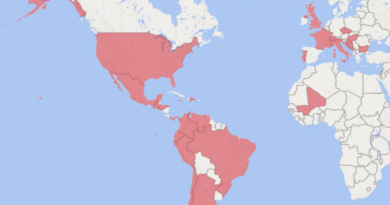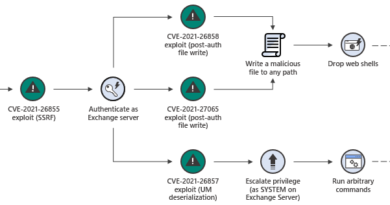Practical application of artificial intelligence that can transform cybersecurity
 As I write this blog post, I’m sitting by the beach on my computer in a sunny destination while my family plays in the water. We’re on vacation, but we all have our own definition of fun. For me it’s writing blogs on the beach—really! The headspace is outstanding for uninterrupted thinking time and focus. However, my employer may not find my vacation destination to be the safest place to access certain applications and data. They want me to strongly authenticate, and they want to understand the health of the systems and devices I am using, as well as the network and geolocation. But thanks to the power of machine learning and conditional access I am able to write this blog when and where I want. My employer is able to enforce all-encompassing security measures to ensure my device, location, and network are safe and confirm it’s really me trying to sign in.
As I write this blog post, I’m sitting by the beach on my computer in a sunny destination while my family plays in the water. We’re on vacation, but we all have our own definition of fun. For me it’s writing blogs on the beach—really! The headspace is outstanding for uninterrupted thinking time and focus. However, my employer may not find my vacation destination to be the safest place to access certain applications and data. They want me to strongly authenticate, and they want to understand the health of the systems and devices I am using, as well as the network and geolocation. But thanks to the power of machine learning and conditional access I am able to write this blog when and where I want. My employer is able to enforce all-encompassing security measures to ensure my device, location, and network are safe and confirm it’s really me trying to sign in.
The ability for my organization to reason over all of the data, including location, device health, sign-in, and app health, is just one example of the way artificial intelligence (AI) is helping us evolve the tools we use to fight cybercrime. In this post I’ll focus on two practical use cases for deploying AI in the cybercrime battlefield. In the first example, I explain how layering AI onto on-premises Security Information and Event Management (SIEM) solutions can give you better insights and predictive capabilities. The second use case is the one I just hinted at, which is how we can take AI even further to protect user access. By the end I hope I’ve proven to you that there is tremendous opportunity to use AI—particularly machine learning—to improve the efficacy of cybersecurity, the detection of hackers, and even prevent attacks before they occur.
If you are skeptical, I understand. I often tell a story about how for many years at the annual RSA Conference, vendors and customers rallied around themes such as “the year of the smart card,” “the year of biometrics,” “the year of machine learning,” “the year of blockchain.” Some of these technologies never lived up to their promise, and many are still nascent and immature in their application, architecture, and use cases. But I think there are practical applications of AI that will meet our expectations, especially when it comes to cybersecurity. If one reflects on broad based attacks like WannaCry and NotPetya and critical vulnerabilities like Spectre and Meltdown, it only stands to reason that the attack surface is rapidly growing, the bad actors are becoming more sophisticated, and the need for tool evolution is compelling. AI is the path to that evolution. As an industry, we need to be cautious in how we position and explain machine learning and AI, avoiding confusion, conflating capabilities, and overpromising results. There is definitely a place for both, and they are highly complementary. AI has the power to deliver on some of the legacy promise of machine learning, but only if it is trained, architected, and implemented properly.
Like all technologies, there is a risk that AI will be misused or poorly used. For the purpose of this blog, I ask you to make the assumption that the tech is being used ethically, the engines are properly trained in a non-biased manner, and the user understands the full capability of the technology they are deploying. Am I asking you to suspend reality? No, I am simply asking you to imagine the potential if we fully harness AI to further improve our cybersecurity defenses and recognize the threat of bad actors who will also embrace AI now and in the future. Please also read The Future Computed: Artificial Intelligence and its role in society by Brad Smith and Harry Shum for a broader vision on AI and its role in society.
Using AI to gain powerful insights
There are several use cases where AI is interesting for cybersecurity applications but let’s first start with what is possibly the most obvious use case—making sense of signal and intelligence. Collective sigh readers before continuing. I understand the consternation related to legacy SIEM solutions, and your visceral response. SIEM solutions were purpose-built to collect logs and data from a wide range of sources, largely for compliance, and they do this particularly well. They also enable users to effectively produce reporting specific to a use case. They do not, however, work well in detecting real-time attacks and allowing an organization to automate and/or orchestrate defenses that will minimize damage to the organization.
Take a moment to think about how powerful it would be to apply the machine learning algorithms that exist today to the data and logs that SIEM collects. AI could reason over the data at global scale in near real-time using the cloud and produce attack scenarios, which you could then tie to a security operations tool that automates the response and defenses based on the outcome of the AI reasoning. With a large volume of globally sourced data, you could use AI to look at anomalies in the behavior patterns of humans, devices, data, and applications at scale and make accurate predictions of the threats to your enterprise—allowing you to deploy defenses well in advance of a specific attack. AI, when trained and deployed properly, has the ability to allow your enterprise to be this effective. You can continue to gain value from the on-premise SIEM infrastructure you built and use the data you gathered for historical context. The cloud provides a true value in this use case in its ability to analyze the data at a global scale. And finally, AI will become predictive as it learns what is normal and what isn’t normal. You can then automate responses via tooling that will allow your admins to focus only on the highest value tasks. AI will reduce the workload of security administrators in the short term, reducing duplication and increasing efficacy of signal.
Intelligently secure conditional access
My ability to write this blog from the beach is evidence that today’s systems for conditional access are good and getting better. The ability to provide access control based on the authentication of the user, device, data, application, and known geo-location provide us a certain level of confidence. The tools that exist can potentially maintain state, have the potential to be quite granular, and are powered by global cloud networks. They often use machine learning to detect anomalous behavior, but today’s tooling suffers from a dependence on legacy architecture, technical debt, dependence on the integration of disparate authentication systems, and hybrid systems. The tooling is often built for just one environment, one use case, or one system of record. In most large, complex enterprises, security admins don’t have the luxury of using the most up-to-date tools for a single environment or use case. Their environments are complex, the attack surface is large, and their users are often unaware of sophisticated security risks. I encounter this in my own home when I explain to family members the inherent risks of free, public Wi-Fi, as an example.
AI for conditional access use cases is not only practical, it’s necessary. We have long lived with an employee base that is working from a large variety of personal and company-issued devices and working from a wide range of locations including corporate owned office space, shared work facilities, coffee houses, hotel rooms, conference facilities, and other global locations. There is also still a gap in the security industry related to the percentage of the population that owns and successfully deploys Multi-Factor Authentication (MFA) tooling. Biometrics HAS actually made MFA more ubiquitous by reducing the friction and expense of purchasing and deploying authentication systems, but organizations are still not investing in MFA across 100 percent of their enterprises. Cybersecurity, like many fields, operates on a risk model. High risk applications and users equal higher security profiles and tools. Now, imagine if we can reduce the risk while also reducing the friction of rolling out tools? AI is dependent on data and good architects and developers to truly live up to its promise, but it is systems agnostic. The data you supply from your mainframe is not ranked higher in priority than the data you supply from the cloud, unless you create a scenario where you desire specific data types to be higher priority or ordinal in ranking.
Conditional access—powered by AI reasoning over the behavior of the user, device, data, application, network, location, etc.—has the ability to create much safer data access for companies and reduce the overall risk. Imagine a dynamic, real-time, global environment where—regardless of where your users choose to work—you can determine their precise level of access and change their level of access in real-time without human intervention. Did something change that causes concern, and would you like your user to reauthenticate? Do you want to block access to some or all systems? Do you want to block access to certain data sets or require some level of encryption? The AI engine—linked with automated tooling—will give you this ability and provide the logging and reporting needed to support the automated actions or human intervention. Your ability to integrate with current tooling to enforce the actions will be the highest bar to full usage in your environment.
There are no silver bullets when it comes to technology and, particularly, cybersecurity. I have talked about two use cases where I believe AI can improve cybersecurity, but there are others a well, such as AI’s ability to allow more robust device-related IoT detection, sophisticated malware detection, and improvements in vulnerability management. The bad actors will continue to innovate and create weapons that can be deployed for large scale attacks. The attack surface is growing with the proliferation of IoT devices on corporate networks on control systems. As an industry, we have a moral responsibility and imperative to continue improving processes, training, and technology to meet new and yet to be developed threats. Artificial intelligence is one weapon in our tool bag. It must be used prudently. And when used effectively, it can truly be a change agent for the industry. Check out my blog, Application fuzzing in the era of Machine Learning and AI, where I wrote about application fuzzing and AI.
Check back in a month when I will blog about how we can use AI to improve device-related IoT detection. In the meantime, I invite you to follow me at @ajohnsocyber.
READ MORE HERE



